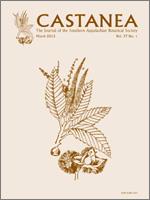Floras, or documented lists of vascular plant species in a defined area, are widely used in biodiversity research and conservation, and represent a common type of publication in regional botanical and natural history journals. Although all floras present common types of information, there has not yet been a formal attempt to develop community standards for floristic data. As a consequence, published floras often lack basic data describing the study area, taxonomic sources, and criteria for inclusion of species. Here, we develop a grading scheme for floras and apply it to 145 articles in 5 leading journals (Castanea, Rhodora, Sida/Journal of the Botanical Research Institute of Texas, Journal of the Torrey Botanical Club, and Southeastern Naturalist) published from 2000 through 2009. We found that the average ‘grade’ was 80%, and did not vary among journals. We also list common mistakes and confusions. We urge authors, editors, and reviewers to adopt (and adhere to) a set of standards that we provide, or to develop similar comprehensive standards of their own.
How to translate text using browser tools
1 March 2012
Biodiversity Data in the Information Age: Do 21st Century Floras Make the Grade?
Michael W. Palmer,
J. Channing Richardson
ACCESS THE FULL ARTICLE

Castanea
Vol. 77 • No. 1
March 2012
Vol. 77 • No. 1
March 2012
biodiversity
data standards
floras
floristics
informatics
publishing




